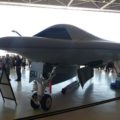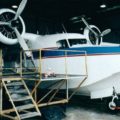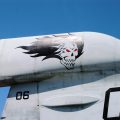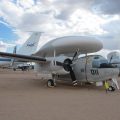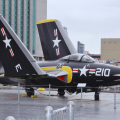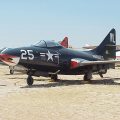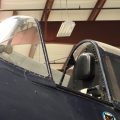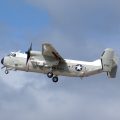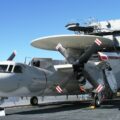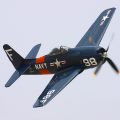Bildegalleri av en Grumman S2F-1 Tracker,
The Grumman S-2 Tracker (previously S2F prior to 1962) was the first purpose-built, single airframe anti-submarine warfare (ASW) aircraft to enter service with the U.S. Navy. Designed and initially built by Grumman, the Tracker was of conventional design with twin reciprocating propeller engines, a high wing and tricycle undercarriage. The type was exported to a number of navies around the world. Introduced in 1952, the Tracker and its E-1 Tracer derivative saw service in the U.S. Navy until the mid-1970s, and its C-1 Trader derivative until the mid-1980s, with a few aircraft remaining in service with other air arms into the 21st century. Argentina and Brazil are the last countries to still use the Tracker.
Kilde: Grumman S2F-1 Tracker på Wiki
...
Mer info:
The Grumman S-2 Tracker was a twin-engine, propeller-driven aircraft designed for anti-submarine warfare (ASW) missions. It was the first aircraft of its kind to combine detection sensors and weapons in a single airframe, making it more efficient and versatile than its predecessor, the Grumman AF Guardian. The Tracker entered service with the United States Navy in 1954 and was also exported to several other countries, including Canada, Australia, Japan and Argentina. The Tracker had a crew of four, a high wing that could be folded for storage on aircraft carriers, and a tricycle landing gear. It was equipped with a search radar, a magnetic anomaly detector, sonobuoys, and various types of torpedoes, depth charges and rockets.
The Tracker had a maximum speed of 404 km/h, a range of 1,400 km, and a service ceiling of 6,900 m. The Tracker was produced in several variants, such as the WF Tracer (later E-1 Tracer), which had a large radome for airborne early warning, and the TF Trader (later C-1 Trader), which was used for carrier onboard delivery. The Tracker was retired from the US Navy in 1976, but some versions remained in service with other air forces until the 21st century.

